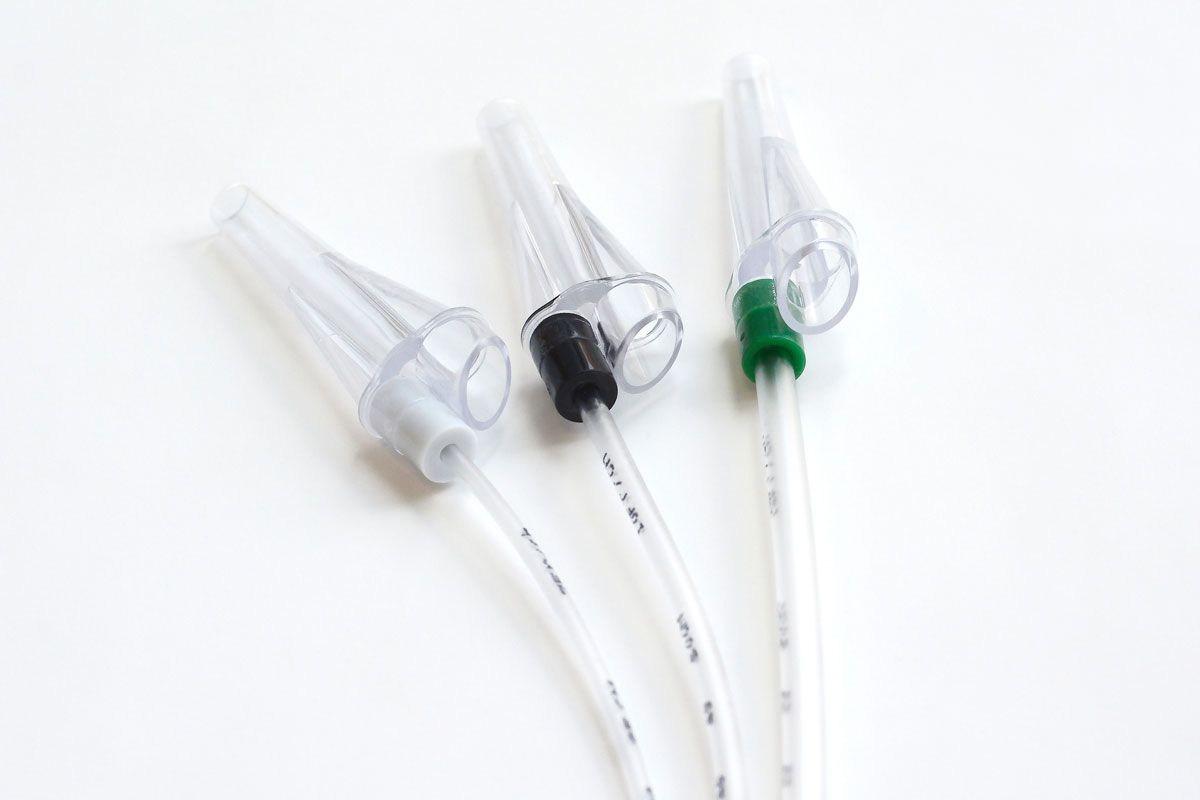How important is the Charrière system to suction catheter use?
The Charrière system measures the diameter of both urinary and tracheal suction catheters. The system was designed by Joseph F. B. Charrière, a medical instrument maker, to create a more consistent and standardised approach to catheter sizing.[1]
The diameter of a catheter is expressed in Charrière (abbreviated as CH or Ch). The terms French Scale or French Gauge (abbreviated as Fr, Fg and sometimes even F) are often used interchangeably with Charrière.
Suction catheters are long and flexible tubes used to remove secretions from the airways during a procedure known as suctioning. Patients with conditions that make it more difficult for them to clear their own secretions may undergo suctioning to prevent blockages. This includes patients with tracheostomies and those on mechanical ventilators.
If performed improperly or too frequently, suctioning can lead to mucosal trauma and other complications. For this reason, choosing the correct catheter size is critical to protecting a patient’s wellbeing and ensuring good patient outcomes.[2]
What does one Charrière unit represent?
The Charrière system measures the external diameter of the catheter. It does not consider the diameter of the internal drainage tube.[3]
1 Ch represents 1/3 of a millimetre. This means that 1mm is equal to 3 Ch.[4]
The Charrière system was developed to have uniform increments between sizes.

Why do we need different suction catheter sizes?
Suction catheters come in a range of sizes and lengths. This is to accommodate the differences between people of all ages, builds and sexes.
For example, the difference between the tracheal dimensions of neonates and adults is considerable. Using a suction catheter in a Charrière range intended for adults on neonates can cause discomfort and significant tracheal trauma.[5]
How do we calculate the correct suction catheter size?
The American Association for Respiratory Care (AARC) set up a panel of experts to produce guidelines for tracheal suctioning.[6] The AARC advised suction catheters should not completely occlude the trachea and allow for the passage of oxygen into the lungs.
The general rule is that suction catheters should not exceed 50% of the internal diameter of the tracheal tube.[7]
The most common formula for determining the suction catheter Charrière necessary for a patient’s tracheal tube is:
(TT size – 2) x 2 [8]
How to identify suction catheters in different Charrière?
| Charrière (Ch) | Colour Coded Connector End | Diameter |
|---|---|---|
| 07 Ch | Ivory | 2.3 mm |
| 08 Ch | Light Blue | 2.6 mm |
| 10 Ch | Black | 3.33 mm |
| 12 Ch | White | 4.0 mm |
| 14 Ch | Green | 4.66 mm |

What are some of the complications related to using the wrong suction catheter size?
Suctioning is an invasive procedure that should only be performed when necessary and with great precision by a trained healthcare professional.
If the suction catheter is too small, it may not adequately clear secretions in the airways. This may require more passes of the suction catheter, which increases the chances of mechanical trauma to the tracheal mucosa.
A suction catheter that is too large carries its own set of risks. The use of a large suction catheter can lead to hypoxia because of the decreased oxygen supply to the lungs.[9] In some cases, suctioning can lead to atelectasis (partial or complete collapse of the lung).[10]
Large suction catheters also increase the risk of injury due to greater contact with the tracheal and bronchial walls.[11]
References:
- Iserson, Kenneth V. J. F. B. Charrière: The Man Behind the ‘French’ Gauge. The Journal of Emergency Medicine 1987; 5(6): 545-8
- Leeds Teaching Hospitals NHS Trust, Tracheal Suctioning – Clinical Protocol for Adults Tracheal Suctioning (leedsth.nhs.uk) [accessed 10 September 2023]
- Baron, Todd H. The History of the ‘French’ Gauge. Gastrointestinal Endoscopy 2006; 63 (3): 461
- Ibid: 461
- Leeds Teaching Hospitals NHS Trust, Tracheal Suctioning – Clinical Protocol for Adults Tracheal Suctioning (leedsth.nhs.uk) [accessed 10 September 2023]
- Gonzalez, Joshua F., Henry, Nicholas R., Russian, Christopher J. Suction Catheter Size: An Assessment and Comparison of 3 Different Calculation Methods. Respiratory Care 2014; 59(1): 32
- Leeds Teaching Hospitals NHS Trust, Tracheal Suctioning – Clinical Protocol for Adults Tracheal Suctioning (leedsth.nhs.uk) [accessed 10 September 2023]
- Ibid
- Ibid
- Ibid
- Ibid
Resources:
Product website:
Other related articles:
Disclaimer:
Please note that while every effort is made to ensure the accuracy of the content presented, it is purely for educational purposes only and is not a substitute for professional medical advice.
